|
Project Spice Rack
Fix it mommy, fix it
|
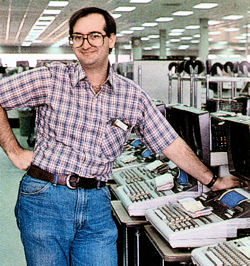
|
|
Steve Leibson
This image appeared in a 1980 issue of HP Keyboard magazine, in the final installment of the series “Leibson on I/O.”
|
|
Steve Leibson grew up in Louisville, Kentucky and discovered the consequences of poor electrical engineering practices at an early age. His favorite toys when he was two years old were a pair of battery-powered toy vacuum cleaners that incorporated a motor and a light. They were constantly breaking and Leibson was constantly asking his mother to repair them. By the age of 10, Leibson was designing launch-control boxes with magnetic safety interlocks for the launch systems of his Estes Industries model rockets and checking his electronics assembly work with a bottom-of-the-line analog multimeter bought for less than $10 at Radio Shack. However, he’d not yet decided to become an electrical engineer.
That decision was made when he met Stoney Ballard in high school. Ballard was interested in electronics and he regularly won top prize in the school science fair. For no reason better than jealous rivalry, Leibson decided to beat Ballard at his own game. In his junior year of high school, Leibson took a correspondence course in electronics from National Technical Schools and then entered the science fair with an optical voice-transmission system based on a helium-neon gas laser he’d built with his friend Victor Crain. (Today, we’re surrounded by lasers, but back then only 10 years had passed since 1960 when the first experimental ruby laser was switched on at Hughes Research Labs in Malibu, California and the first gas laser became operational at Bell Labs in New Jersey.)
Leibson purchased the helium-neon laser tube and power supply from Metrologic Industries, a vendor that had run a construction article in the December, 1969 issue of Popular Electronics magazine. Metrologic, founded by Harry Knowles in 1974, eventually became a major laser and laser-scanner vendor. Additional electronic parts and an enclosure for the laser came from the local Radio Shack and from P.I. Burks, a local radio-electronics parts store that had been a major national supplier of electronic parts back in the early days of radio.
Like Larry Smith, Leibson built a number of Heathkits including two oscilloscopes, a couple of transistorized voltmeters, audio and RF signal generators, and a power supply. He even drove his mother’s white Pontiac Catalina station wagon all the way from Louisville to Heathkit’s headquarters in Benton Harbor, Michigan to pick up a microwave oven kit because the size of the shipping box seemed too big, complex, and expensive to ship.
In his senior year at high school, Leibson developed a crude digital optical communication system using plastic fiber optics purchased from a famous, national electronic surplus vendor named Poly Paks; infrared LEDs and photodiode receivers made by Motorola; RTL integrated circuits bought locally at P.I. Burks; and an early, 3-digit, 7-segment LED numeric display manufactured by the Components Division of Hewlett-Packard. (General Electric had manufactured the first visible LED only 9 years earlier.) By then, Leibson was firmly set on a course for becoming an electrical engineer.
Leibson went to Case Western Reserve University (CWRU) in 1971 to earn his BSEE degree. In his freshman year, he took introductory computer-programming classes based on Algol 68, a relatively new structured programming language that had become very popular in the academic world. Program input was via punched cards and output appeared on green-bar, fan-fold paper churned out by large, noisy chain printers. It was a batch Univac 1108 system. Debugging was hard on the clumsy batch system and programming insight was scarce.
By the end of his freshman year at CWRU, Leibson knew he never again wanted much to do with computers. However, a summer intern program at the University of Louisville’s Speed Scientific Engineering School put Leibson in the command chair of an HP 2100 minicomputer that played Star Trek, a very early computer game that used character graphics and consumed yards and yards of computer paper as the player zoomed through the galaxy destroying Klingon battle cruisers with phasers and photon torpedoes and searching for star bases at which to refuel and resupply. After taking a class in assembly language from Professor Philip Bevington (the patron saint of experiment design and Monte Carlo data analysis) using a DEC PDP-9 computer located in the synchrotron lab down in the basement of CWRU’s physics department, Leibson’s interested in computers was at least rekindled.
|
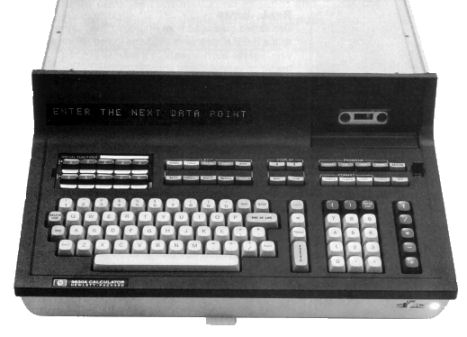
|
|
HP9830A Desktop Calculator/Computer
|
|
In his junior year, Leibson purchased an HP 35 pocket scientific calculator, just after HP dropped its price from $395 to $295. He immediately found that the calculator gave him a huge and unfair advantage over his slide-rule using classmates in his Circuits III class. He could iteratively compute an answer to a quiz problem several times while the dipstick crew had time for only one round of computation. Then, in his senior year at CWRU, lightning finally struck in the form of an HP 9830A desktop computer, which was installed in a small room in the Carlton Commons in the middle of the CWRU dorm complex. Here was a computer that fit on a desk. Shut the door to the room and the machine was all yours. No punched cards to drop. No noisy chain printer. Just an interactive machine that was 100% yours. This was clearly the future of computing and Leibson wanted a piece of it. “I’m going to work for Hewlett-Packard, at the division that makes this machine,” he thought. Then he thought: “I wonder if this thing can play Star Trek.”
And so, he did
Just a few months later, in late 1974, HP came to recruit at CWRU. Chuck Near was charge of HP’s CWRU recruiting effort. He was the man who’d brought the HP 9100A desktop calculator from HP Labs in Palo Alto to Loveland, Colorado; who had developed the single-board processor based on HP’s 2116 minicomputer that was used in HP’s 98x0 series of desktop calculators and computers; and who was now looking to recruit newly minted engineers for HP in general but especially for the R&D lab of the Calculator Products Division in Loveland. Near found himself across the desk from a gushingly enthusiastic soon-to-graduate electrical engineering student glowingly describing the very machine Near had played such a key role in developing: the HP 9830A.
By January, Leibson was visiting the Loveland and interviewing for a position. He took a version of the computer game Star Trek specifically written for the HP 9830A back with him to CWRU. By July of 1975, Leibson had received and accepted an offer to join HP (his only job offer and the only one he’d tried to snag) and he’d moved to Loveland, Colorado to start working for HP’s Calculator Products Division in Chuck Near’s Peripherals and I/O section of the R&D lab.
Leibson’s first boss at HP was Geoff Chance, who was the project manager for all of the HP 9825A I/O cards and for the HP 9872A multipen plotter (Project Spider). Chance had earned this position by developing The Link, a universal I/O box and several prototype I/O cards for the box including an I/O card that linked to the HP 9100A desktop calculator. With the HP 98032A parallel I/O card, the HP 98033A BCD I/O card, and the HP 98034A HPIB card (Projects Parsley, Sage, and Rosemary) and John Nairn’s I/O ROMs well on the way to completion, Chance needed to solve another I/O problem. The HP 9825A was clearly on track to becoming a stellar instrument controller—just as Don Morris and Chris Christopher had decreed—but physical case-size limitations restricted the desktop calculator/computer to only three I/O slots, which was clearly inadequate for the expected applications.
Electrically, the HP 9825A’s I/O space could accommodate 14 external I/O cards. (Two of the 16 available I/O addresses were dedicated to internal HP 9825A peripheral devices: the keyboard and the single-line LED display shared one I/O address the internal thermal strip printer used another.) The HP 9825A needed an I/O expansion box like The Link so that users could plug more I/O cards into the machine. Such a box had been developed for the HP 98x0 family of desktop calculator/computers; It was called the HP 9868 I/O expander. The HP 9825A needed something similar and Leibson got the job of developing this product.
Electronically, there’s not all that much to an I/O expander. There’s a power supply to provide power for the I/O cards plugged into the expander. There’s a cable to link the expander to the desktop computer, and there are buffer circuits at each end of the cable to ensure signal integrity. That’s it. It’s not a big exercise in electrical engineering. But that’s not the point. It was an entire product, not a piece of one. At that time, in Geoff Chance’s section, Leibson along with the other newly minted engineers including Mike Kolesar and Larry Smith were being given entire products to define, develop, and take to production. (Dick Barney was a veteran HP engineer and marketer at this point. The HP 98034A HPIB card was not his first project at HP.) In the engineering world, that’s a huge responsibility for a new engineer to take on the development of an entire product and Kolesar, Smith, and Leibson all relished the challenge and reveled in the responsibility.
The first major hurdle was selecting the project’s name. The project needed a catchy name although the official model number was already assigned: The HP 9878A I/O Expander (a peripheral-style product number, even though the HP 9878A is more like an overgrown I/O card). Following on the theme of Parsley (parallel I/O), Sage (BCD I/O), Rosemary (HPIB), and Thyme (a project name reserved for a real-time clock card that would be developed sometime in the future), Leibson selected the name “Project Spice Rack.”
|
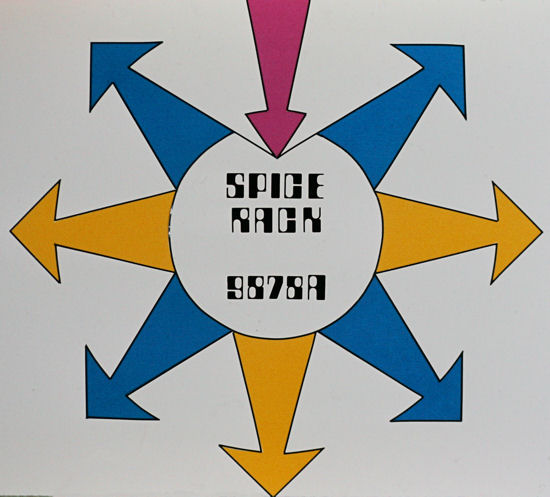
|
|
Internal logo for Project Spice Rack, a 7-slot I/O expander for the HP 9825A
|
|
The next step was to define the product. Clearly, it would be a box with an I/O card that plugged into one of the existing I/O-backplane slots in the back of the HP 9825A desktop computer. The expander box would then provide some number of slots that would replicate the signals from the HP 9825A’s I/O backplane. There were two key questions:
- Could the HP 9825A’s synchronous I/O backplane be extended without exceeding the allowed timings
for the I/O cards?
- How many slots?
The first question was a technical question. The second was mostly a marketing question. Leibson needed to answer both questions to define the final product.
The second question was easier to answer. The previous generation’s HP 9868A I/O Expander transformed one of the four I/O slots in the back of each HP 9810A, 9820A, 9821A, and 9830A desktop calculator/computers into ten slots, making a total of 13 I/O slots. The HP 9868A was housed in an HP System 1 enclosure, which was a heavy, rack-mountable metal case that HP had developed so that it could mass produce instrument enclosures and thus reduce the manufacturing cost. The HP 9868A’s ten expansion slots plus an additional slot for the calculator-to-expander link cable just fit into the width of a System 1 cabinet.
However, the HP 9825A’s I/O cards were somewhat fatter than the I/O cards used for the previous generation of HP 98x0 family of desktop calculator/computers. Ten of the HP 9825A’s I/O cards would not physically fit into the width of a rack-mountable cabinet. In addition, Leibson wanted to make it possible to use every available I/O address, which called for a total of 14 slots in an expanded system. One 10-slot I/O expander would only grow an HP 9825A system to 12 slots by converting one of the HP 9825A’s three I/O slots into 10 slots. The solution was to build a 7-slot expander. Seven I/O cards would easily fit into a System 2 cabinet side by side and a system builder could use two I/O expanders for extremely large systems that needed to exploit the HP 9825A’s entire I/O address space. (The System 1 cabinets used for the earlier HP 9868A I/O expander were obsolete by then, supplanted by the cheaper, lighter, and more versatile System 2 cabinets.)
|
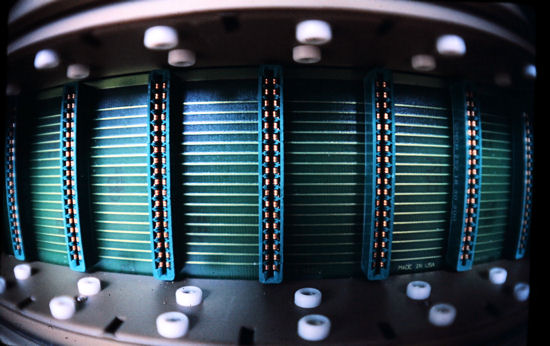
|
|
The HP 9878A I/O Expander had a 7-slot I/O blackplane. HP 9825A systems needed two of these expanders to fully expand the desktop calculator/computer’s I/O space.
|
|
The answer to the timing question required research. The product’s feasibility was in doubt because no one on the HP 9825A project had thought about the answer to this question. The timing of the HP 9825A’s I/O backplane was entirely based on the timing of the IOC (I/O chip) in the hybrid microprocessor. There were additional buffering circuits within the HP 9825A that added delay to that timing and the HP 98032A, 98033A, and 98034A were designed with that timing in mind. No forethought had been given to the additional delay that an I/O expander might add to the I/O backplane timing. Leibson could only work with the spare nanoseconds that remained after accounting for the delays inserted by the internal HP 9825A I/O buffer circuits and the backplane-interface circuits in the I/O cards.
Leibson gathered the timing information for the IOC, the schematics for the internal I/O buffers in the HP 9825A, and the schematics for the I/O cards and then calculated the amount of slack time available for the I/O expander. There wasn’t much time left. In fact, the time remaining wasn’t nearly enough if Leibson used worst-case timing for all of the components in the timing chain (the most conservative design approach). There was no way to make an I/O expander for the HP 9825A if all of the integrated circuits used in the calculator, the I/O cards, and the expander were as slow as they could be while still meeting their manufacturers’ specifications.
|
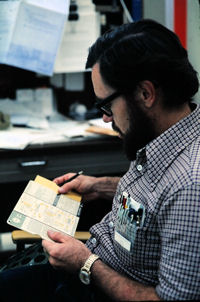
|
|
Jerry Nichols, mechanical design engineer on the HP 9878A I/O Expander project.
|
|
The Spice Rack project was saved only because HP didn’t buy the cheapest (slowest) integrated circuits from vendors. It bought qualified parts that were generally well within manufacturing tolerances. All purchased parts have specification tolerances and digital integrated circuits are no exception. Integrated circuits can be fast or slow from one manufacturing batch to the next and component data sheets list timing tolerances among many dozens of other specifications for each electronic part. Companies that pay the least for their components tend to get parts on the outer fringes of manufacturing tolerance. These parts may be cheaper, for example, because they’re not tested as rigorously or they’re not tested at all. Companies that want and pay for high-quality parts (like HP) get tested parts that are more uniform; their specifications tend to fall the middle of the specified tolerance band and not at the extremes. So that was the engineering game that circumstances forced Leibson to play because there simply was no other way to get the job done with components available at the time (except to exceed the speed of light over the I/O expander’s 6-foot cable, which was and is still beyond reach of most engineering projects—but perhaps not forever).
Leibson wrote a program for his HP 9810 desktop calculator to calculate the statistical tolerance of the entire I/O timing chain from the calculator to the I/O card and back again, based on the assumption that not all of the parts in the chain would come from the same manufacturing batch (unlikely because they would be in different products) and that HP would not be uniformly getting the slowest parts from its vendors. The statistical program results gave some hope. It was possible to build an I/O expander that would work, probably most of the time. Leibson sold the gamble to his boss Geoff Chance based on the results of his statistical analysis and then designed the Spice Rack. Leibson designed the electronics (the power supplies and logic) while mechanical engineer Jerry Nichols took on the mechanical-design task of transforming an HP System 2 cabinet into an I/O expander. The project took about a year to complete.
Click here for the next part of the HP 9825 I/O story.
|
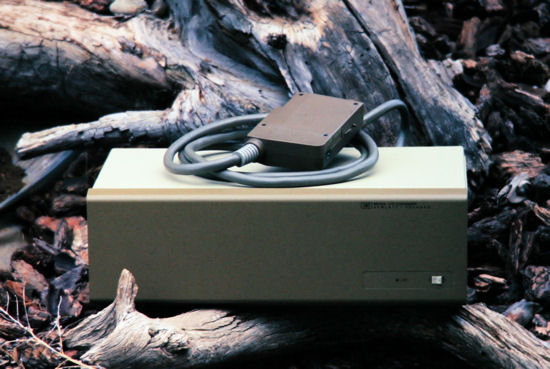
|
|
The HP 9878A I/O expander, really more of an overgrown I/O card, was built into a standard HP System 2 instrument cabinet. This shot was made using the landscaping on the grounds of Steve Leibson’s apartment in Loveland, Colorado.
|
|
Information on the I/O pages of this site came from interviews with: Don Morris, Geoff Chance, Chris Christopher, Mike Kolesar, John Nairn, Dick Barney, Larry Smith, Ed Schlotzhauer, and from the memories of Steve Leibson.
|
|
|